a (fanfic) writing sideblog | merry | ao3: thefictionfairy | main: amerrymasquerade | mcu sideblog: spideromanoff
Don't wanna be here? Send us removal request.
Note
The best thing I've found for fixing an over-analyzing spiral is to put the work away for a bit. Don't look at it for a week (or month, or whatever) to give your brain a break from it so that you can come back to edit with fresh eyes.
helloo do you think there's something such as (re)reading yourself too much? i have the (bad?) habit of reading my story again and again to make sure i make sense when i write it, but i also feel like it's the reason why, to me, my writing eventually feels weirdly paced and generally not nice to read / write ... while it still seems fine to others.
Re-Reading Own Work Too Much
I think it's different for everyone, but if you feel like if you're re-reading too much and that's causing an issue, I do think you may want to start trying to figure out your limits. You may want to limit yourself to re-reading only in certain situations, or re-reading a chapter or scene only a certain number of times. It may take a little trial and error before you figure out your limit, but once you do, things should go a little more smoothly for you! ♥
•••••••••••••••••••••••••••••••••
Have a writing question? My inbox is always open!
Visit my FAQ
See my Master List of Top Posts
Go to ko-fi.com/wqa to buy me coffee or see my commissions!
34 notes
·
View notes
Text
I’ve said it before, I’ll say it a thousand more times: No piece of dystopian fiction has ever been a prediction of the future. They are observations and criticisms of the present.
157K notes
·
View notes
Text
why must i Write Words? is it not enough to imagine, passionately,
51K notes
·
View notes
Quote
Don’t tell me the moon is shining; show me the glint of light on broken glass.
Anton Chekhov (via writingdotcoffee)
244 notes
·
View notes
Text
where’s that one “pakige” post bc like
AO3, Basic Logic, God, Everyone: You posted a chapter five minutes ago, and should get comments gradually over the next few hours! Me, .5 seconds after posting, sitting with my face pressed up against my AO3 inbox: commente
83K notes
·
View notes
Text
options for when you no longer like a fic you wrote
Orphan it. By adding it to the orphan_account on AO3, you remove your name from the fic and from the comments (if you replied to them). The work is removed from your account and from your stats. You will not see future stats or comments or kudos on that work unless you click into the fic yourself to investigate. You can no longer edit or delete the work after you orphan it. You can not get the work back.
Add the fic to an anonymous collection. This will remove your username from the story and from the comments if you choose to reply, but you will retain ownership of the work and still be able to edit/delete/orphan it in future. You can also regain ownership at any time by removing it from the anonymous collection.
Add a disclaimer or other author’s note to the top of the story explaining how you feel, or what’s changed since you wrote the fic.
Edit the fic. Either make changes to the existing story on AO3 or create a new story and include something in the summary or an author’s note that says you are rewriting your own work. You can even link the two together in a series or with the inspired by function.
Delete the fic. While this will sadden readers for whom it might be a favourite story, this is always an option. Your Archive is your own, and you can control which of your works remain on the internet.
Remember that you wrote that fic at a time in your life when you felt a certain way or had a certain skill level. There’s no shame in that. You had to start somewhere to get where you are today. ❤
11K notes
·
View notes
Photo

Words
22 notes
·
View notes
Text
Writer: I don’t know if anybody will like my story. I’ve never done it before. What if it’s too hard? I’m not sure of anything, I’m second-guessing it, I’m scared that it’ll turn out bad. What if I try my best and still fail? What if my idea is overdone or cliche? Would anybody even be interested in what I have to say? Me, sobbing on my knees: please… write the fuckigngbgng book… stop doubting yourself into a corner… you’ll never know how good you are until you have work to reflect upon… time is limited, and it only runs forward, so please do the same!
4K notes
·
View notes
Text
Character development doesn't refer to character improvement in a moral or ethical respect. It refers to broadening the audience's understanding of that character, giving the character a deeper background, clearer motivations, a unique voice.
Developing a character is about making them seem more like a real person, and real people are flawed. Real people make mistakes. They repeat mistakes. They do things other people don't agree with. Real people are more than just 'good' or 'bad' and character development is about showing all of those other aspects of them.
Their interests and hobbies. The song that gets stuck in their head. The fact that their vacuum broke 3 months ago and they haven't gotten it fixed yet. All of those details help build out the character and develop them more.
And yes, characters change as stories progress but that doesn't mean they get 'better' in a strict moral sense. It means that their experiences change the way they interact in the world you've written for them. Just like real people do.
19K notes
·
View notes
Text
Limits of the Human Body
Body Heat = 107.6 F
Cold Water = 40 F
Hot Air = 300 F
High Altitude = 15,000 ft
Starvation = 45 days
Diving Depth = 282 ft
Lack of Oxygen = 11 minutes
Blood Loss = 40%
Dehydration = 7 days
263K notes
·
View notes
Text
Sometimes you don’t make art that changes the world.
Sometimes you make art that just makes someone’s shitty day a little bit easier to bear.
And that?
That’s damn good too.
7K notes
·
View notes
Text
Final word on horror, I promise, but I think great horror of any genre hits you in the hindbrain. You can ask yourself post-facto why something works, talk out the logic and its loopholes, but the initial flush of terror? the flinch, the finger digging into your limbic system/guts? that’s what horror is. And no matter how you frame it, discuss it or dissect it, that first flush of shock, pleasure, or revulsion endures.
137 notes
·
View notes
Text
Fantasy Guide to Hair
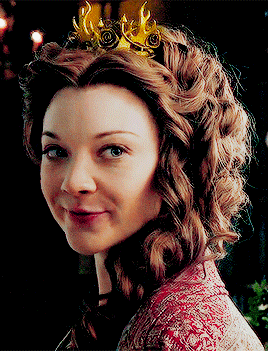
Hair is one of the facets of the characters' look as well as worldbuilding. Hair has always been important to many cultures such as the Vikings and Native Americans. So here is the Fantasy Guide to hair @cat-inthe-corner
Hairstyles
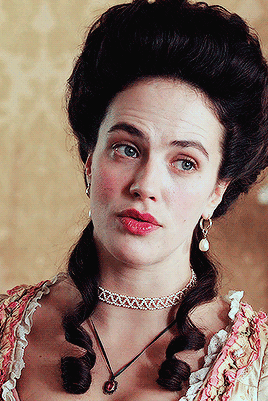
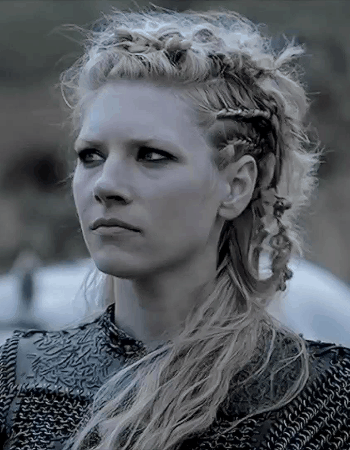
I am always asked what styles historical women wore. The truth is we can't exactly know for sure. Besides, if you spend your time describing a character's hairdo you will put your audience to sleep. Really you can paint a vague picture for your audience and that'll do.
Down and unadorned: Girls of every class wore their hair down to show they were unwed. Married women always wore their hair up and covered it. Only prostitutes wore their hair down and uncovered.
Braid/Plait: Braids were an easy tidy away hair. Braids were pinned to the head and set under headdresses. Braids lasted longer that any other hairstyle.
Wigs: Some historical women and men wore wigs. Wigs were seen as cleaner and easier to maintain. The Egyptians shaved their heads and wore wigs. The Renaissance revived wigs. Wigs were rather gross and most wearers carried long pins to scratch their heads.
Bob: The humble bob was a popular haircut throughout the Mediaeval period for men. Bobs came back into fashion in the 20s for women seen as a daring rebellion against the patriarchy.
Historical Hair Care

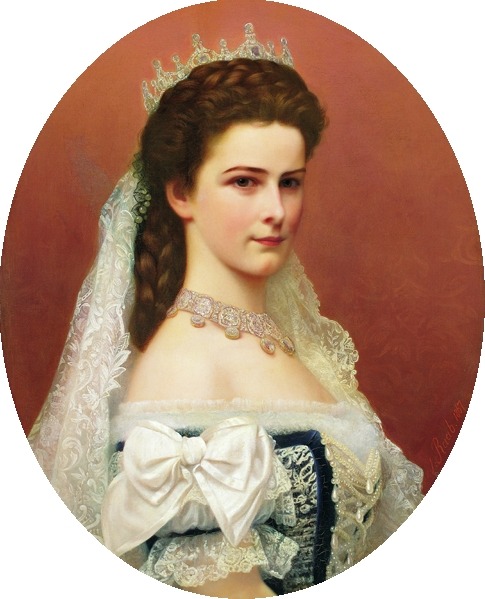
Women have been obsessed with having perfect hair for centuries. Women have always sought to find anything to help make their hair smoother, curlier, bigger and shinier.
The Egyptians often used castor oil and almond oil on their hair. It smoothed their hair as well as protected it. The Egyptians were rather into wigs and to keep them smelling fresh, they melted soft perfumed wax comes onto the wigs.
Tudor and Elizabethan women would use animal fat or lard in their hair. It would keep the hair in the shape it was teased into (historical hairspray) as well as smooth it. However, it drew lice and flies and must have smelt ghastly after a few days.
Assyrian women and men curled their hair by using hot iron bars and oil. Sound familiar? This was the predecessor of the curling iron (or as I call it-that-very-hot-stick-my-sister-leaves-on-the-table).
The Ancient Indians oiled their hair to prevent baldness which is still used today in parts of India.
As hair was not often washed in the 17th & 18th centuries, people turned to powders and pomades. The powder were made of flour and starch to soak up grease from the hair. Pomades were to make the hair smell nicer.
A popular conditioner of the times was made from bacon fat. Since women didn't want to go about smelling like breakfast, the fat was often cut with rosewater or lavender or another scent.
Women would have combed their hair with brushes and lice combs. Most women pre-19th century would keep their hair styled for days or weeks on end. After the 19th century, women began to brush and comb their hair regularly.
Mediaeval women washed their hair with soap made from animal fat mixed with ashes and vinegar.
Victorian/Edwardian women often washed their hair with eggwhites to get shinier hair. The Empress Sisi famously had a head of gorgeous hair which she was obsessed with. “Every three weeks it was washed with raw eggs and brandy, a procedure which took an entire day, including drying. After washing her hair, the Empress would don a long, waterproof silk dressing gown and walk up and down until her hair dried.”- Ludwig Merkle.
Dye

Hair was dyed throughout history just like it is today. Some colours were easily found, some not.
Blonde hair was the most desirable colour for Mediaeval/Renaissance women. Blonde hair was often obtained by using a concoction of olive oil, white wine, alum. Other ways of obtaining blonde locks involved using saffron, tumeric and skins of onions. It could also be washed with limes and dried in the sun.
Red hair was not a popular hair colour in mediaeval times but it became popular after Elizabeth I. The Romans often scalped Celts to make wigs from their hair. Red hair could be made from using Henna which is orange in colour.
Brown hair can be obtained by mixing indigo and henna. It is not permanent but can be after a few rinses. This is likely what Sansa Stark is currently using in ASOIAF. (Green hair like Wylla Manderly's would be obtained by either fucking up a dye job or mixing the blonde with blue.)
Blue hair if you want to go wild could likely be made from woad leaves and blackcurrants skins.
Accessories & Headresses



Pins: Most hair pins looked rather like pens. Hair would be wrapped about it and then pinned up on the head of the wearer, really not so different to bobby pins today. Pins were a favourite gift to give women of most time often made of wood, ivory, metal and were worn by ladies of all classes.
Ribbon: Ribbons were used by both classes. Thin strips of material would be woven through the hair in order to keep it neat as well as look great. Upper classes had the ribbons made of silk and other fine fabrics.
Feathers: Feathers were worn in all time periods. Elaborate towering do's were often graced with plumes to add extra height.
Headbands: Headbands have been about for years throughout most of civilization. From slim ribbons across brows to jewelled headbands of the 20s, headbands were a simple yet classic look.
5K notes
·
View notes
Text
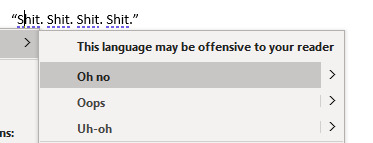
Microsoft really out here trying to stifle my creativity
85K notes
·
View notes
Text

49K notes
·
View notes
Note
Can you give tips on how to write slow burn? Thanks in advance!
I am going to be very honest.
I’ve never written a slow burn in my life. I’m writing (mostly just planning so far) one now for the very first time. It’s very exciting.
What I’ve done is:
Interrupted almost kisses. They shall not even kiss until maybe the very last page.
Enemies to lovers so they have to build trust first.
Have them bond but never think the other one likes them back.
Always a reason not to confess.
Halfway through one will be hurt and the other will care a lot. At the end this is switched. We like that good angst.
Lots of light flirting.
Everyone knows they’re like each other (except for them.)
It helps when there is a compelling reason why they can’t be together, not just “they won’t confess cuz drama.” If not enemies, have their love conflict with their goals in the story.
Push them together and then push them apart. Over and over again. “They almost confess but then- something is revealed.” “They almost kiss but then- they’re reminded why they can’t be together.” This is a very fine line to walk because you run the risk of aggravating your reader is it’s not a good reason.
2K notes
·
View notes
Text
how to keep people in character: a guide
I have gotten some requests for advice on how to write specific characters, but the underlying principles to keeping characterizations canon-compliant can apply to writing anyone in any series. Better yet, this advice may help you come up with character interpretations that feel both canonical yet original (and distinct from mine!).
You can reduce characterization to three basic principles:
1) Habits and speech patterns
Habits and speech patterns serve as “shortcuts” that immediately connect the character to the canon. The audience recognizes these cues and will associate them to the actual character.
Speech patterns are particularly important to keeping a character recognizable. As soon as the speech pattern of a person deviates from canon with no explanation, the suspension of disbelief will break for an audience. A common issue I see in shipping fics is that people will make a character give the love interest a pet name that just would never leave their mouth in canon-compliant situations.
Habits can be verbal tics (e.g. they say “babe” a lot), bodily motions (e.g. touching their hair or pushing up their glasses), behavioural trends (e.g. eating a lot), or even phrases that come up often. The latter I find is underused but very effective. Here’s the thing about people in real life: they will repeat phrases and stories, sometimes even verbatim, to different people! If you lift a line out of the show or book and re-contextualize it, it’ll immediately feel like the canon.
Habits come with two caveats:
Do not overuse the tics. It can be annoying and intrusive, especially when used more frequently than in canon!
Do not rely too much on these habits for characterization. Your character may come off as a shallow imitation of canon without “substance” if so.
The next two tips will help give your characterization substance and originality.
2) Drivers in decision-making and thought patterns
People in real life often have patterns in the decisions they make or the thoughts they have because of some kind of underlying motivation, whether or not they are cognizant of it. The same will apply to well-written characters in fiction. Try to think about any significant decisions the character makes in canon and why they might exist. (Hot tip: If these motivations are not explicitly stated in the canon material, this is where you can come up with some extremely juicy headcanons!)
Understanding the fundamental drivers behind the character’s actions will allow you to extrapolate and write what they’d do in the situations in your fanfic. These non-canon situations can include relationships! It’s a common issue for romantic relationships in fanfic to feel OOC because the characters act inconsistently with their canon decision-making and thought patterns solely for their love interest.
Examples of common drivers in fiction:
Abstract values such as freedom, revenge, survival, self-preservation. (If you’re writing anything political, try to figure out how they value conservatism vs liberalism, anarchy vs authoritarianism, etc).
Baggage and trauma relating to familial issues or past relationships, which can often result in maladaptive trends in behaviour or hard-lined moral codes and ideals.
Significant relationships that affect their needs, goals, etc. Pay attention to platonic, familial, or romantic bonds that are strongly featured in the canon.
All these examples are interrelated. Often our abstract values will arise from baggage, which then influence relationships, which in turn influence our values. Try to think about how each of these types of drivers may relate to one another for your characters.
Stories tend to have the most layered characterizations when the author has identified two drivers that are in conflict with one another, or one that leads to opposing behaviours. This can also be the starting point for character growth, whether it’s a hero’s journey or descent into a villain role.
3) Cultural context
Cultural context is a subcategory of drivers that I often find is overlooked.
The culture in which someone was raised will often influence their decision-making habits, whether they conform to it or outright reject it. Recognizing the cultural context for a character can be very useful for figuring out cool little headcanons or extrapolating behaviour/opinions in the absence of canon material.
Some examples of how culture contributes to behaviour:
The kind of art and hobbies they enjoy, or at least are on their radar.
Knowledge they would have about certain topics—even mundane things like musical instruments, certain skill sets, etc.
Their judgments on themselves and other characters, as well as the values they’d project onto their relationships.
The actions they would take when trying to conform to social norms of the time period—or even the set of actions that might occur to them!
It’s a pet peeve of mine when characters behave in a way that ignores their cultural context, simply because it won’t feel realistic! Since I’ve been relating this to shipping, I will make this point: what time period and country (or coded culture) is this character in? What are courtship norms like? And, if we’re going to go the nsfw route, what “interests” (haha) would exist?
Here are some quick examples of this analysis applied to two different characters: Hakuryuu Ren (Magi), Daryl Dixon (TWD). These are characters I’ve gotten requests for—let me know if anyone is interested in others!
Keep reading
3K notes
·
View notes